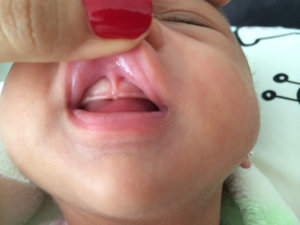Will my baby’s misshapen head cause her more problems? How did it get that way? What can I do to fix it? Does he really need a helmet? Is the human head evolving? These questions and many more are ones I often hear while working on babies.
An infant’s head consists of 8 cranial bones and 14 facial skeleton bones. They are not fused like we perceive an adult’s to be. We may know about our baby’s soft spots, but if you carefully feel your baby’s head, you may notice some ridging of bones, as well as some small gaps in between bones, and in some cases even flat spots. In an ideal world, these would all be even with room for the brain to grow evenly, and room to exit for each cranial nerve, which control important functions such as vision and latching, sucking, and swallowing.
When I started working on babies in 2005, the babies’ heads and upper necks usually just took a few gentle touches in a few visits to even out. I’m grateful to have all the experience, because the heads of infants have gotten much more complicated! Plagiocephaly, the medical name for asymmetry in the growing head of an infant, was found in 46.6% of 205 babies in one study done in 2013. Compare that to the 1990’s, when it was estimated that only 1/60 babies had plagiocephaly. Certainly in 2022 that number keeps growing.
Why are babies born with such a higher incidence of plagiocephaly? First of all, traumatic birth is increasing. An increase in the number of emergency C-sections, forceps and vacuum extractions, and difficult labor in general can cause asymmetrical molding, or even pulling of the certain parts of the cranium in the birth canal. Sometimes even before the birth, a baby’s malposition (such as breech, posterior, or asynclitic/tilted) in the birth canal or uterus is what makes the birth process more difficult. After such a birth and/or pregnancy, baby may have misaligned neck, tight neck and shoulder muscles. This usually looks like a preference to turn their head all the way in one direction, tilt to the side, or arch their back. As baby stays in their favored position over time, flat spots emerge on his or her head. Lastly, tongue and lip ties, which pull on the tissues within the head, can cause an increase in asymmetry.
All that to say... in most cases with an uneven head, baby often has trouble with feeding, latch. He or she may swallow lots of air and have uncomfortable digestion, gas, or reflux. Colicky babies often cry lots, and sleep may be difficult to come by. So it's not just a cosmetic issue, it can feel like having an infant this fussy and picky is making family life exhausting!
Correction today can be a bit more work than the average baby 15-20 years ago, but most cases are able to be solved in a few weeks to a few months with gentle craniosacral, chiropractic adjustments, and an at-home stretching protocol taught to caregivers. Babies love this work, and the side effects usually include more sound sleeping, bigger and more frequent bowel movements, and a more peaceful demeanor. To find out more, fill out the contact us form below!
Part 2 coming next week: more about craniosacral, how it works, and why it can help so much
 :
: